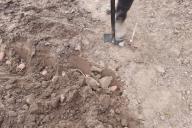Ticks are one of the main problem factors that dogs face.
These small parasites can cause a variety of infections and diseases, such as babesiosis, ehrlichiosis and Lyme disease.
The coat requires regular grooming and inspection.
Regularly examining your pet is the first step in combating ticks.
Perform an inspection after walks or play, especially if your dog has spent time in tall grass or wooded areas.
Pay attention to the most vulnerable areas, such as the ears, neck, armpits, stomach and between the fingers.

If you find a tick, remove it immediately using tweezers or a special tool for this purpose.
After the examination, it is also recommended to treat your dog's fur with an antiparasitic agent.
Use of antiparasitic agents
Antiparasitic agents are one of the key tools in protecting your dog from ticks.
There are various methods of antiparasitic protection available, including collars, drops on the withers and tablets.
Consult your veterinarian to choose the most appropriate option based on your dog's age, weight, and lifestyle.
Proper use of antiparasitic agents will help prevent ticks from infecting your pet.
Create a Tick-Free Zone in Your Yard
One way to protect your dog from ticks is to create a tick-free zone in your own yard.
Remove tall grass, bushes and leaves, as these are the places where ticks live.
Use special garden and yard treatments to minimize the presence of these pests in the environment.
Regularly inspecting your area and preventing tick infestations will help create a safe and comfortable environment for your dog.
Earlier we wrote about how often you need to wash your dog.








